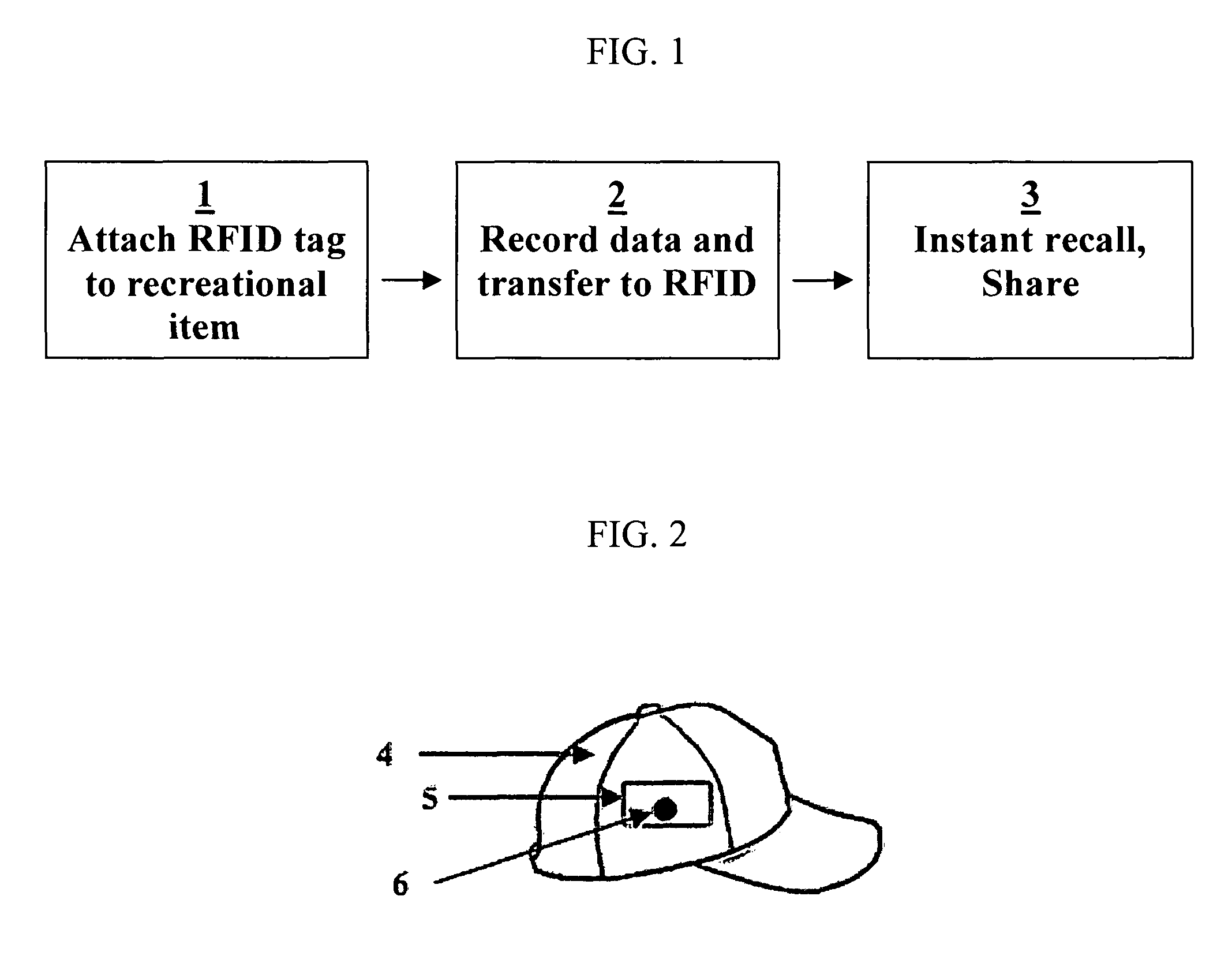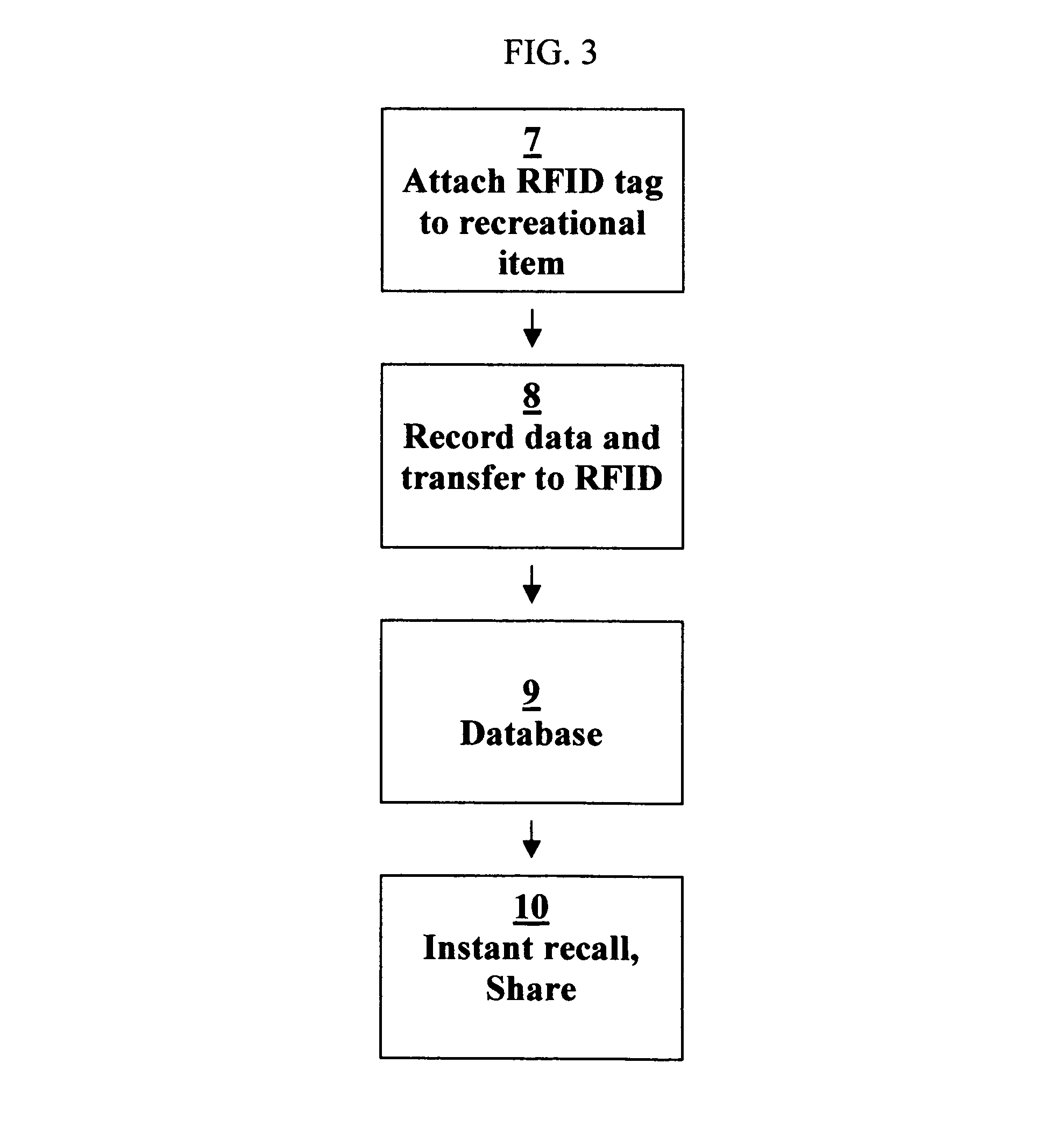Method to promote and distribute multimedia content using radio frequency identification tags
a radio frequency identification and multimedia technology, applied in the direction of instruments, electric signalling details, burglar alarm mechanical actuation, etc., can solve the problems that the control of inventory has become a major challeng
- Summary
- Abstract
- Description
- Claims
- Application Information
AI Technical Summary
Benefits of technology
Problems solved by technology
Method used
Image
Examples
example 1
Using RFID Technology to Record a Visit to the Beach
[0041]RFID technology can be used to record events. This process has been demonstrated in the tropical outdoors. RFIDs have been used in Hawaii at Kailua beach on the island of Oahu.
[0042]In order to retrieve information, the Treo 650 cell phone (Cingular) was placed in close proximity to the RFID tag. Unlike traditional barcodes, the transponder (RFID tag) does not need to be in direct line of sight. It can be embedded in clothing, plastic, recreational equipment that can be covered with material or debris. This feature is important in outdoor settings where dirt, salt, snow, rain and dust is prevalent. For our beach experiment, a label containing the transponder was placed directly behind a patch that was embroidered into a towel. The GPS location of the beach was directly written on the RFID tag. To initiate the process, a touch screen button was pressed to activate cell phone. The RFID receiver switched to the detection mode an...
example 2
Recording Catch Data on a Fishing Pole
[0046]A rectangular 1¼“by 2” RFID tag was attached to a deep sea fishing pole and tested in Taveuni, Fiji. On Aug. 6, 2005, barracuda, tuna, and walu were caught trolling artificial lures. A photo of the fish was taken using a Treo 650 cell phone. The name of the photo was changed to the unique RFID identifier (E0070000021BF377) and sent via multimedia messaging (MMS) to an email account. Information about the fishing trip (type of fish, size, date and location) was written on the RFID tag. Data links that connect the photos, text, and audio files were also written on the RFID tag. The subject line of the multimedia message contained the unique RFID number. Upon returning to the United States, memories of the Fijian fishing trip were shared with friends using RFID technology. In this process, a RFID enabled cell phone was placed adjacent to the tag. A touch screen button was pressed instructing the phone to read the tag. The unique sixteen-decim...
example 3
Recording Catch Data on a Fishing Hat
[0047]A rectangular 1¼“by 2” RFID tag was used to record fishing data in Kenai, Ak. On Jun. 29, 2005, three King salmon were caught from a boat on the Kenai river. A photo of the fish was taken with the Treo 650 cell phone. The name of the photo was changed to the unique RFID number (E007000002003078) and sent via multimedia messaging (MMS) to an email account. The fish were measured and recorded on the RFID tag. A 43 inch salmon was brought on board the boat and the other two (48 inch and 49 inch) salmon were released alive. Additional information about the fishing trip (type of fish, estimate weight, date, and location) was written on the RFID tag. The data link that connected the photos, text, and audio files was the RFID tag number. The subject line of the multimedia message contained the unique RFID number. Upon returning to Hawaii, the RFID tag was embedded inside of a fishing hat (FIG. 2) that was purchased in Alaska. Memories of the Alask...
PUM
 Login to View More
Login to View More Abstract
Description
Claims
Application Information
 Login to View More
Login to View More - R&D
- Intellectual Property
- Life Sciences
- Materials
- Tech Scout
- Unparalleled Data Quality
- Higher Quality Content
- 60% Fewer Hallucinations
Browse by: Latest US Patents, China's latest patents, Technical Efficacy Thesaurus, Application Domain, Technology Topic, Popular Technical Reports.
© 2025 PatSnap. All rights reserved.Legal|Privacy policy|Modern Slavery Act Transparency Statement|Sitemap|About US| Contact US: help@patsnap.com



